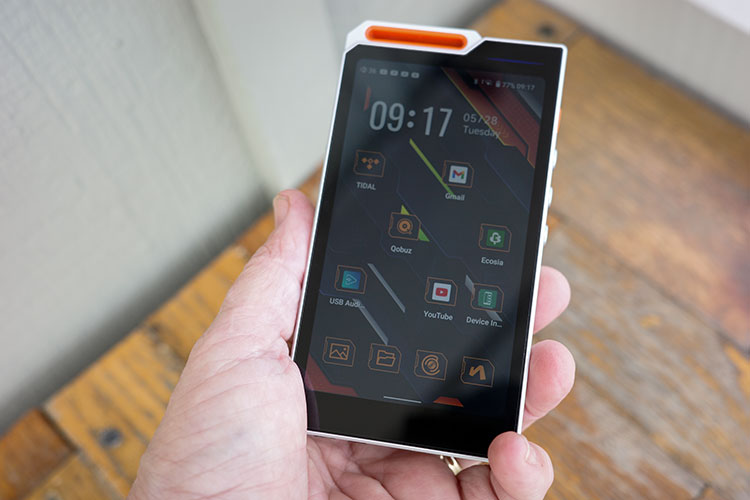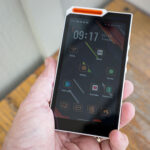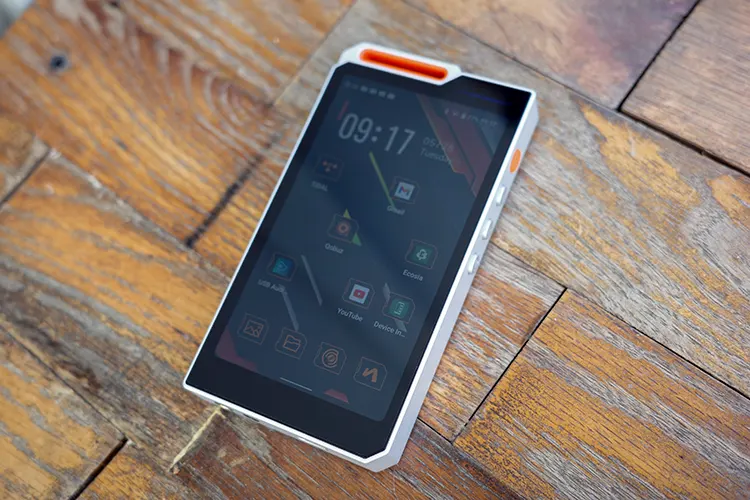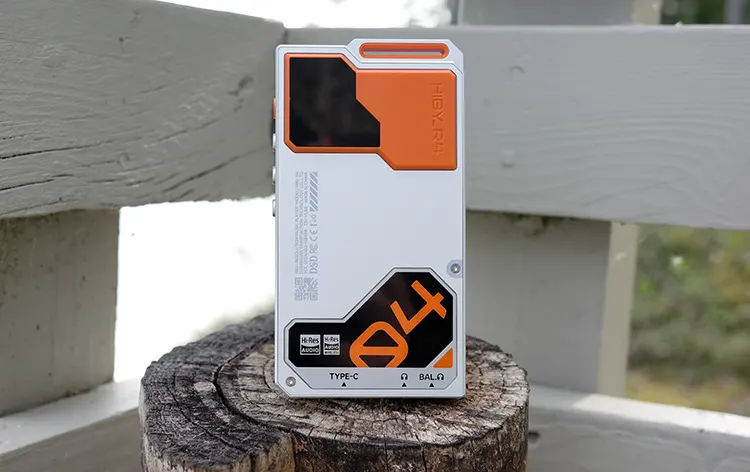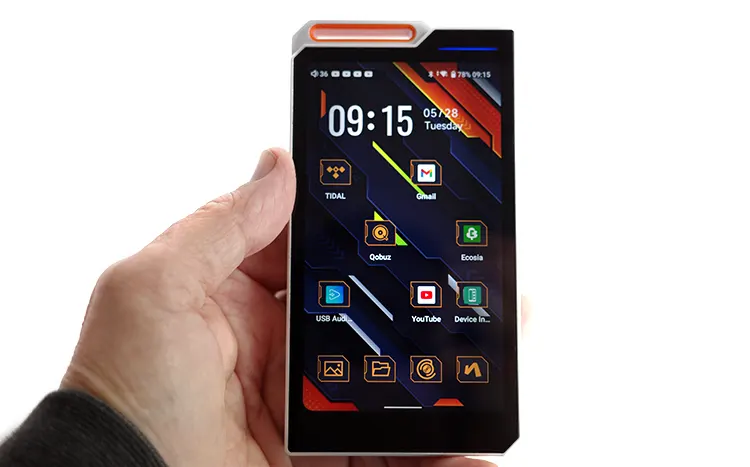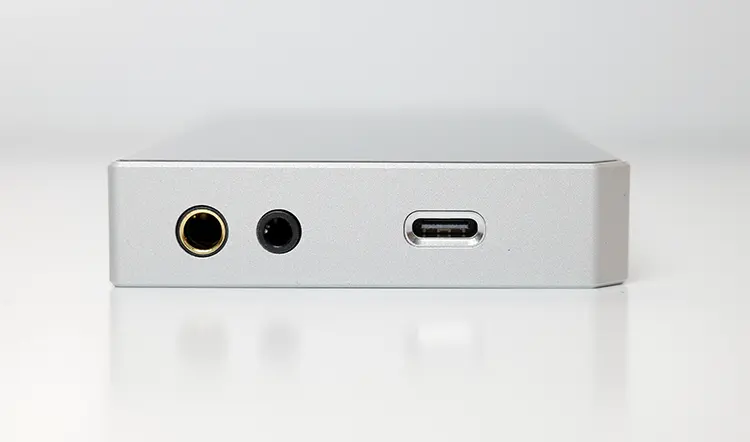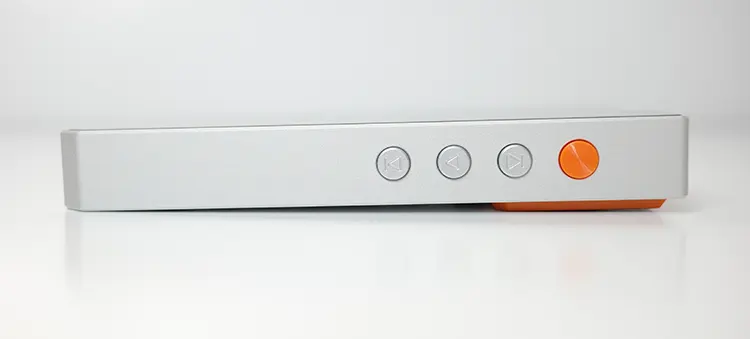Lynn reviews the $249 HiBy R4, which is a new cyborg-inspired Android 12 DAP featuring a quad DAC and up to 525mW of Class A amplification.
Disclaimer: This sample was sent to me in exchange for my honest opinion. Headfonics is an independent website with no affiliate links. I thank HiBy for their support.
You can click here to read more about the HiBy products previously reviewed on Headfonics.
Note, that this article follows our current scoring guidelines which you can read in more detail here.
The new HiBy R4 DAP has caused some fuss within the community. Is this the replacement for the venerable R3 II, an update to the R5 Gen 2, or an exercise coming forth from lessons in the R8 II that Marcus recently reviewed? Or even an alternative to the affordable M300?
Since I have the M300 and R3 Pro, both will be compared and after reading much on forums I would argue that the R4 is not only in its own HiBy niche but is a complimentary option to the R3 II.
There is plenty of competition at this price, even discounting HiBy’s models, such as the Shanling M1s, the FiiO M11S, or the TempoTec V6, albeit all of these are a bit older.
There is enough difference between the many models from HiBy though, that the R4 can stand on its own, and I find out exactly how in my full review below.
As a bonus on page 3, we also do a short review of HiBy’s new HiBy x f.audio Project ACE IEMs. These also retail for $249 but bundled with the R4 you can get both for $489.
Features
The $249 HiBy R4 is a competitively priced digital audio player. It boasts Qualcomm’s Snapdragon 665 CPU (3 GB RAM, 32 GB ROM) along with open Android 12.
Though targeting mainly IEM users, headphone lovers will also appreciate the R4’s 525mW Class-A power at 32Ω (4-OPA1652, 2-OPA1612) out of the 4.4mm balanced jack.
Running four ESS’s ES9018C2M DAC chips (two dedicated for PCM, two for DSD) means the R4 supports PCM up to 768kHz/32bit and DSD of up to 256. MQA 16x unfolding helps make for a snappy response to the music.
Not earth-shattering numbers and specs, but the additional aspects included such as MSEB, PEQ, and the many plug-ins offered set the R4 apart.
Helping to keep the R4 signal disciplined in addition to jitter are dual FPGA clocks at 45.158MHz & 49.152MHz, which keep noise to a minimum in the audio path as well as externalities and an accurate sound path.
Two-way BT 5.0 means the R4 can send and receive Bluetooth signals supporting UDAT, LDAC, aptX, aptX HD, AAC, SBC, and others. It should be noted that aptX and aptX HD only support BT output, while the others listed are two-way.
WiFi using both 2.4GHz and 5GHz allows for quick connectivity over networks. You should have no issues downloading from the included Google Play Store and HiBy’s customizable plug-ins.
Design
Aesthetics
There is no getting around the different look of the R4. The “cyborg-themed” design is growing on me and is not without functionality. Those edges also allow the user to keep ahold of the DAP, while other sleeker designs rely upon a case for grip. I preferred the R4 without the included case in hand.
That edgy design carries over to the back where a dark glassed section can be customized to show three diagonal colors when operating. This shows much better without the dark gray case and compliments the color of the DAP.
The many color choices have been highly anticipated, especially an all-black version. That is a limited run for the home Chinese market only.
The orange color scheme sent to me is quite pleasing, and for most of the test, I left off the dark gray plastic case. That case fits quite snuggly and does an excellent job protecting the R4 (don’t ask me how I know this).
Form Factor
The R4 is also built solidly, with a large 4.7” touchscreen, which functions without bother. The button placement is good enough to avoid accidental hits. Placement of the buttons aids in the functionality and can be used equally with either hand (not always the case).
The raised button “knobs” are appreciated tactility-wise, and I could quickly access all functions without bother. The R4 weight of 231g makes it slightly lighter than my iPhone 13 Pro Max but feels much lighter due to the dimensions of 129.6*68.3*18.5mm.
Although some have called the R4 “chunky” due to the depth, I appreciated that extra thickness, which afforded me a better grip.
Battery Life
The R4’s 4500mAh battery takes approximately two hours to charge fully using a 20W power source. Not the quickest, but certainly not the slowest.
I was able to verify the approximate 11 hours of run-time using the 3.5mm se jack, coming in at 11.3hrs, 10.75hrs, and 11.2hrs on three successive tests (at varying volume levels up to my limitations which were no higher than 50 of low gain and 45 on high gain, listening source dependent).
Running my preferred 4.4mm balanced output with the Project ACE IEM, dropped the run time of the R4 to 9.8hrs and 10.25hrs respectively using the same parameters listed above.
While the R4 is certainly not the best in the category, it is quite acceptable, especially since most of us have access to charging readily available.
Screen
The R4’s 4.7” IPS screen carries a larger blank area below it than other comparable DAPs. This is beneficial since many of us rest a thumb in that location.
Side borders are acceptable, but I wish for a slightly thinner black area. The R4’s 720×1080 resolution LCD screen offers 24bit 16.7 million colors which I find perfectly acceptable, even when watching some videos.
While not the absolute sharpest, I had no trouble defining finer details in video content or accessing apps. Again, for a device such as this, these numbers seem to fit right in.
In my testing, I could easily access any app on the R4 screen and scrolling was good. Not great, but good. I found that tactility-wise it was not the best, but against its competitors, it handled all of my queries well.
Adjusting the R4 color scheme is not straightforward, though. To change the background, you need to enter “Apps” from the “Settings” screen first. Following that, you access “Default apps,” then hit the gear icon on the next screen.
This is then where you can change the color scheme under “App Icon Style” changing colors from blue, green, orange, and original as they might normally appear on your phone.
I found this less than intuitive and happened upon it by accident. Then after watching several video reviews, I noted that I was not alone. A small price, but cumbersome if the mood fits.
Changing the actual background of the R4 is done under “Display,” then “Choose Wallpaper” including “Live” options if you have them uploaded.
Again, not intuitive and this does make a difference, especially if you have changed the app theme. I found I could settle on an acceptable medium, which allowed me to see the apps displayed on the screen.
I/O
The R4 carries three inputs/outputs on the bottom: a USB-C is used for charging and use as a USB DAC, a 3.5mm se jack, and a 4.4mm bal jack.
Dedicated LO was recently added in the latest firmware. You can set the USB for file transfer, audio in (with USB charging still available) audio in (USB charging disabled), and no data transfer. Max volume can be set under the “Audio” settings.
The top left side of the R4 carries the micro-SD slot (up to 2TB, 32GB onboard) and volume up/down buttons. Many do not use SD music streaming exclusively, but it is nice to see it included. From what I have been reading though, many transfer their music to an SD card and listen in this manner.
The R4 USB port also functions as a coaxial connection, but a conversion cable is not included.
Controls
The right side (as you look at the screen) of the R4 carries the function buttons in typical, logical order. The power button is orange plastic covered and I would assume stays color coordinated.
A long press (greater than two seconds) starts the process. I did find this to be a bit annoying in the time consumed. The play, FF, and REW buttons function when the screen is off, which is typical of a DAP as well.
The top of the R4 carries a slot for a strap, which is included as a default accessory. The left side of the R4 carries the micro-SD slot (up to 2TB, 32GB onboard) and volume up/down buttons.
You can lock different modes out using the switch on the top. The default is locking volume buttons when engaged (even when the screen is on) so you do not accidentally turn the volume up.
The logical functioning of the R4 buttons is much appreciated, even if the effort involved is deliberate. Tactility is quite good too, with the necessary functions working properly.
When the R4 screen is on, the top left corner on the back lights up in three lines colored with your choice of DAP (orange lights up in orange, green lights in green, etc). I will note that when the smoked gray case is under the light it is harder to see.
Packaging & Accessories
The R4 comes in a two-part package, with a slide-off section carrying the necessary specifications and other items. The inner box lid then comes off to reveal the R4 unit set in a soft foam insert.
The experience is simple, yet functional. This would not be mistaken for a luxury item, but I do appreciate the straightforward nature of the unboxing. The included USB-C to USB-C cable can be used for data transfer and charging.
The smoked gray plastic case is underneath and it does provide good protection for the R4. It also carries fingerprints galore, along with being quite an endeavor to install. This is one of the rare times I preferred using an item without the case, knowing full well the calamity that could happen to me.
Two front screen protectors are included, and of course, I made a mockery of mounting the first. Slightly off such that when the case is on the bottom left shows as “lifted.” Nonetheless, I kept it on during the tests but removed it for picture-taking.
Click on page 2 below for my software impressions.
Click on page 3 below for my sound impressions and recommended pairings.

